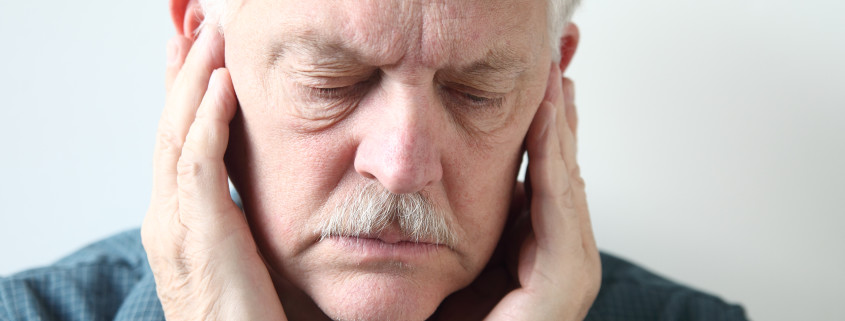What Is TMJ? Or Do You Have TMD?
More than fifteen percent of American adults live with some form of chronic facial pain like jaw pain, headaches, or earaches. About ten million of those people can attribute that pain to TMJ Disorders.
What is the difference between TMJ and TMD?
The temporomandibular joints (TMJ) are located on each side of the head just in front of the ears. It is the hinge that connects your jaw to your skull. Along with muscles, ligaments, discs, and bones, your TMJ helps to make the different movements required for eating and talking.
Temporomandibular Disorder (TMD) covers multiple conditions that affect the TM joints. TMD can occur when your jaw opens, closes or moves from side to side. TMD pain can be experienced in the jaw joint as well as in the muscles that control your jaw’s movement.
What causes TMD?
Because the TMJ combines hinge action with sliding movement it is a complicated structure that is easily damaged. The areas of bone that interact with the joints are covered in cartilage and separated by small disks to absorb shock. This set-up normally keeps movement smooth. Erosion of the disks, slipping of the discs out of alignment, damage to the cartilage, or injury to the joint from a hard impact are all risks to joint’s efficiency.
There’s no definitive cause of TMD and it can be hard to pinpoint for each person, especially if there’s no problems in the joint itself. Symptoms can arise from problems with the joint or the muscles around it. Injury to your jaw, trauma in the muscles of your head and neck such as whiplash, teeth grinding, arthritis, improper bite, jaw dislocation, and stress can all be contributing factors.
Stress from heavy lifting or taxing situations can aggravate TMD because it generally causes you to clenching and grinding of the teeth.
What are the symptoms of TMD?
TMD affects nearly twice as many women as men and is most common women between the ages of 20 and 40.
Symptoms include:
- Pain in or around your ear.
- Ringing in the ears (tinnitus).
- Dizziness
- Aching facial pain.
- Headaches and neck or shoulder aches.
- Swelling on the side of your face.
- A tired feeling in the muscles of your face.
- Tenderness in your jaw.
- Jaw pain that is worse in the morning or late afternoon.
- Jaw pain while chewing, yawning, or biting.
- Difficulty opening your mouth wide.
- Jaws that get stuck or locked open.
- Tooth sensitivity when no dental problems can be found.
- Clicking, popping, or grinding noises when you open and close your mouth. This may not include pain.
- Trouble chewing as if your upper and lower teeth aren’t fitting properly together anymore.
How do you know if you have TMD?
Because there is such a variety of symptoms and there are many other conditions that can cause similar symptoms, you should see your dentist for a diagnosis.
Your dentist will first want to rule out other causes such as tooth decay, sinus problems, arthritis, or gum disease. Then she will ask you some questions about your health history and conduct a physical exam. During the exam she’ll check your joints for pain and tenderness, listen for clicks, pops, or grinding during movement, make sure your jaw doesn’t lock open or closed, and test your bite. If TMD is suspected you may need x-rays, an MRI, or a CT scan to get a more detailed picture of your joint and disc health.
In most cases discomfort from TMD will eventually go away with some simple self-care practices. If your symptoms aren’t going away, try to stick with conservative treatments. If irreversible treatments are recommended, make sure to get a second opinion first. We’ll cover these self-care practices and treatment options more in our next blog.

